Complete guide to ivy care
Charming, romantic and with a hint of English eccentricity, ivy makes a brilliant houseplant.

Ivy thrives almost anywhere and it’ll look fantastic tumbling over your bookshelves or in a hanging basket. Here’s how to care for it:
- It’s happy in most light conditions but bright light is best
- Unlike most plants, it prefers slightly cooler temperatures
- Keep the soil moist but not soggy – check it regularly
- It likes humidity, so it’ll be happy if you mist it every other day
- Watch out for climbing roots that could mark your walls
About ivy
As English as a cup of tea on a cloudy day, ivy is known as a much-loved outdoor plant. You’ll usually find it scrambling up brickwork, with its long stems and pretty pointed leaves giving it a romantic, slightly wild vibe. Fortunately, it’s just as happy to live indoors with us.
We’ve got two ivies to choose from. There’s Ivy, the classic English variety with mid-green leaves. And there’s Effy, also known as variegated ivy, with pale cream leaf tips.
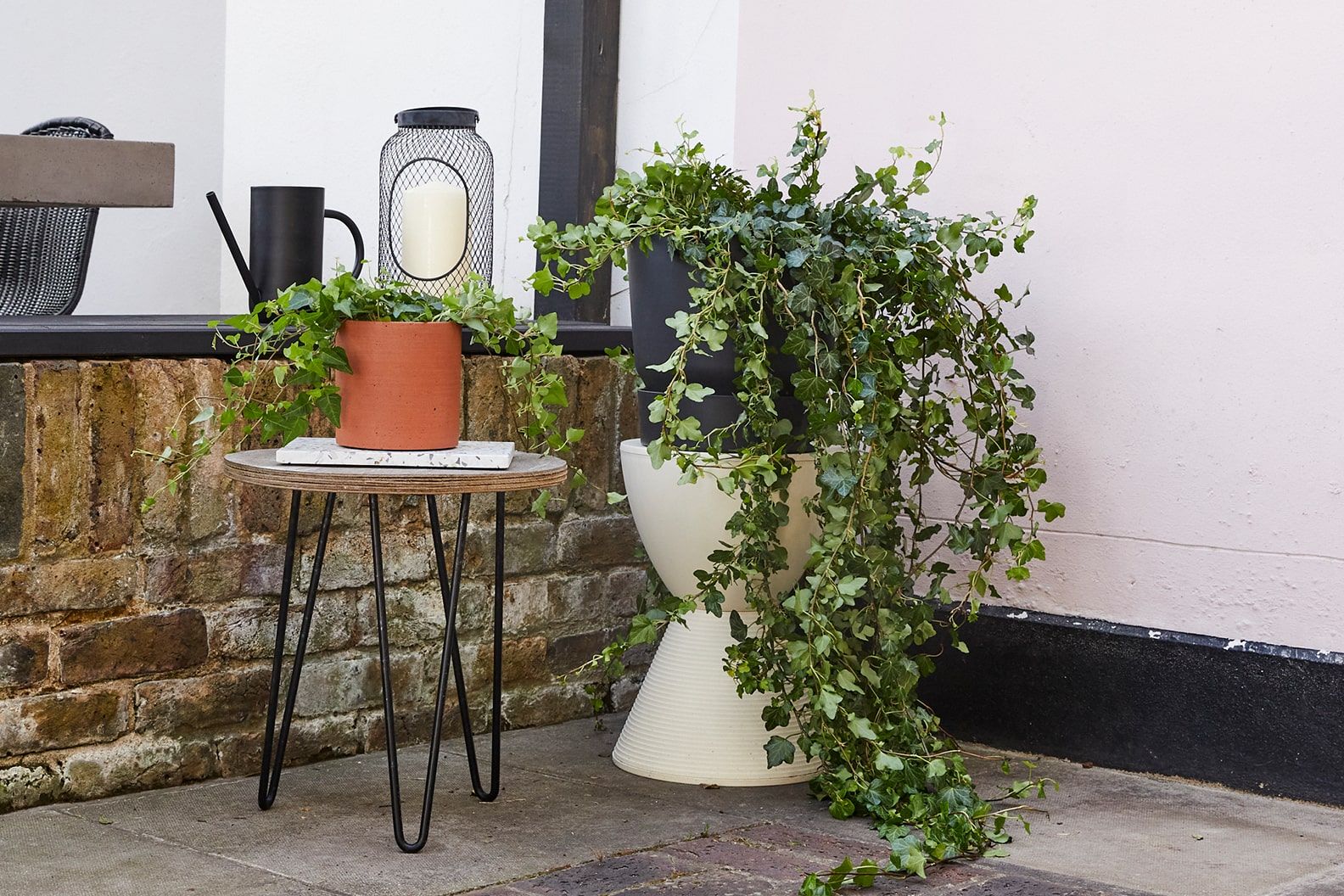
Is ivy easy to care for?
Ivy thrives indoors, considering its reputation as an outdoor plant. Even better, its easy-going nature makes it perfect for new plant owners. Cool rooms, dim light – not much fazes it.
The only thing ivy feels strongly about is humidity – it’s used to British weather, after all! So as long as you keep it moist and misted, it’ll be happy and healthy.
How much light does ivy need?
Great news – ivy tolerates almost any light condition. From sunny windows to dingy corners, it isn’t really bothered about where you put it. But if you can, give it a spot with bright, indirect light (that means near a window, but not in the sun).
If you’ve chosen a variegated ivy (Effy), then lower light levels could lead to duller-looking leaves. So if you want to keep your plant looking vibrant, you’ll need to place it in a bright spot.
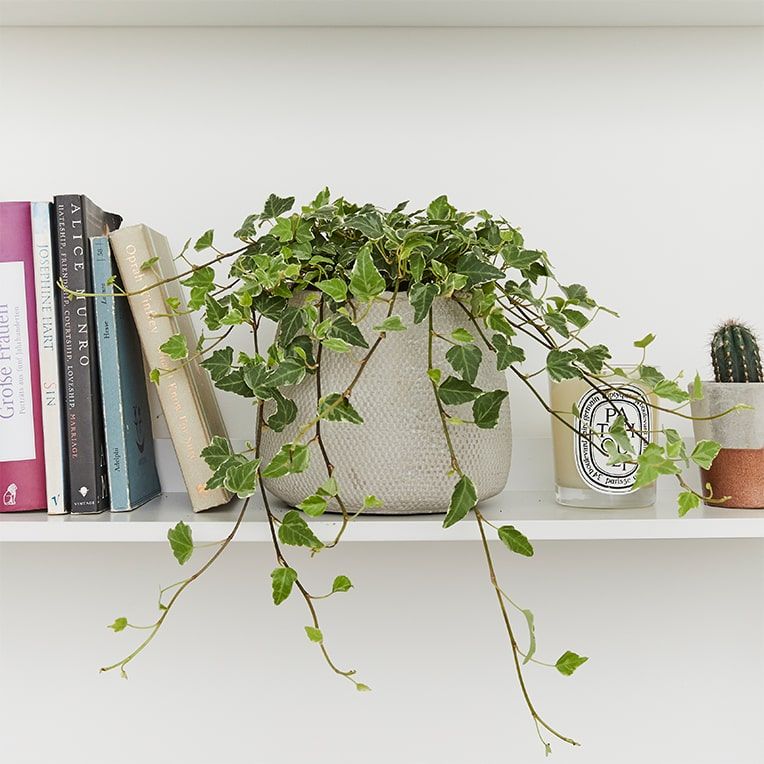
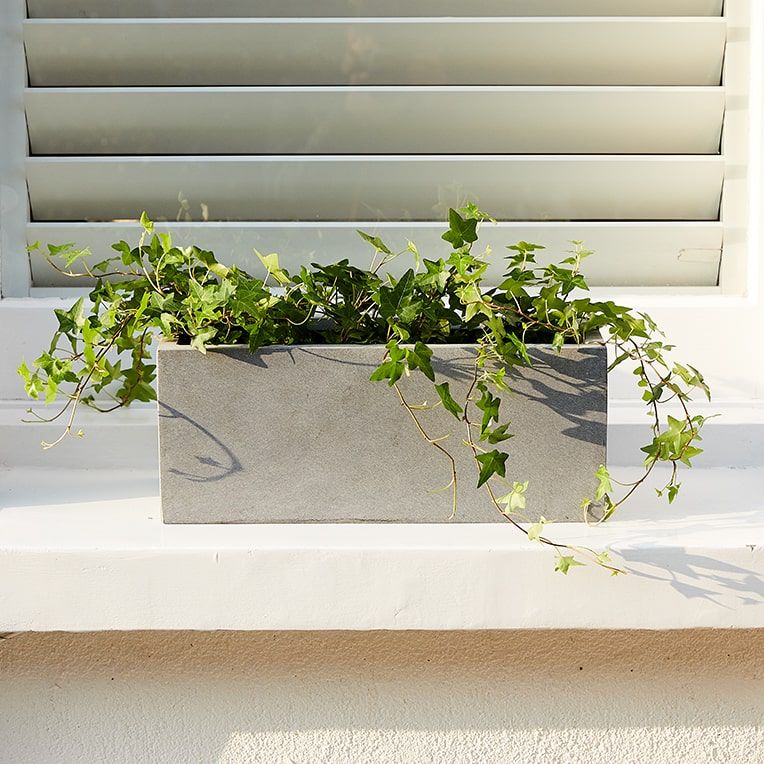
How much water does ivy need?
Your ivy likes moist soil but hates being soggy. So we recommend checking the soil regularly, and watering when the top two inches feel dry. It loves humidity too, so give it a spritz with your mister every other day.
Ivies also enjoy an occasional shower, to wash dirt and debris off their leaves. Nothing fancy – just a quick rinse in your bathroom should do the trick.
How fast does ivy grow?
Outdoors, ivy can scramble up brickwork incredibly quickly. It still grows energetically indoors but don’t worry, it won’t take over your living room when your back’s turned.
Ivy is always keen to climb, and it might shimmy up your walls if you let it. It attaches itself to surfaces with little aerial roots which grow along its stems. Just be aware that the roots can leave marks behind.

Can I trim my ivy?
If your ivy is getting out of control, it’s absolutely fine to snip off the longest stems. It won’t harm the plant at all. Learn more about pruning here.
Once you’ve given your plant a haircut, why not grow new plants from the cuttings? Trim them to about 4-5 inches, then pop them in a jar of water on a sunny windowsill. Once they’ve grown roots, you can plant them in small pots. New plants for free – it’s as easy as that.
In this article
Rewild your inbox
Plant tips. Special offers. No spam.
You might like
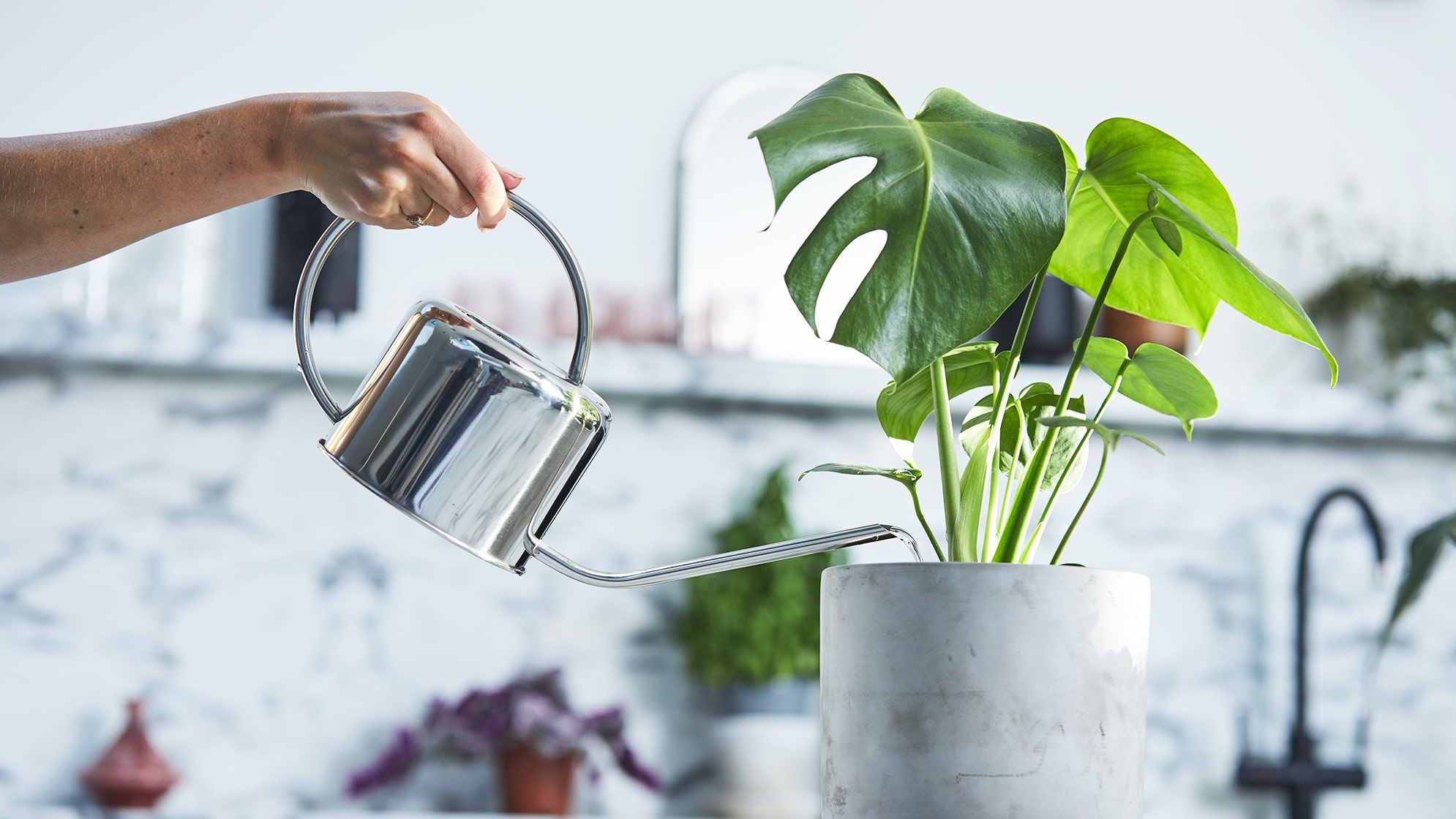
Complete guide to watering
How to avoid over or underwatering
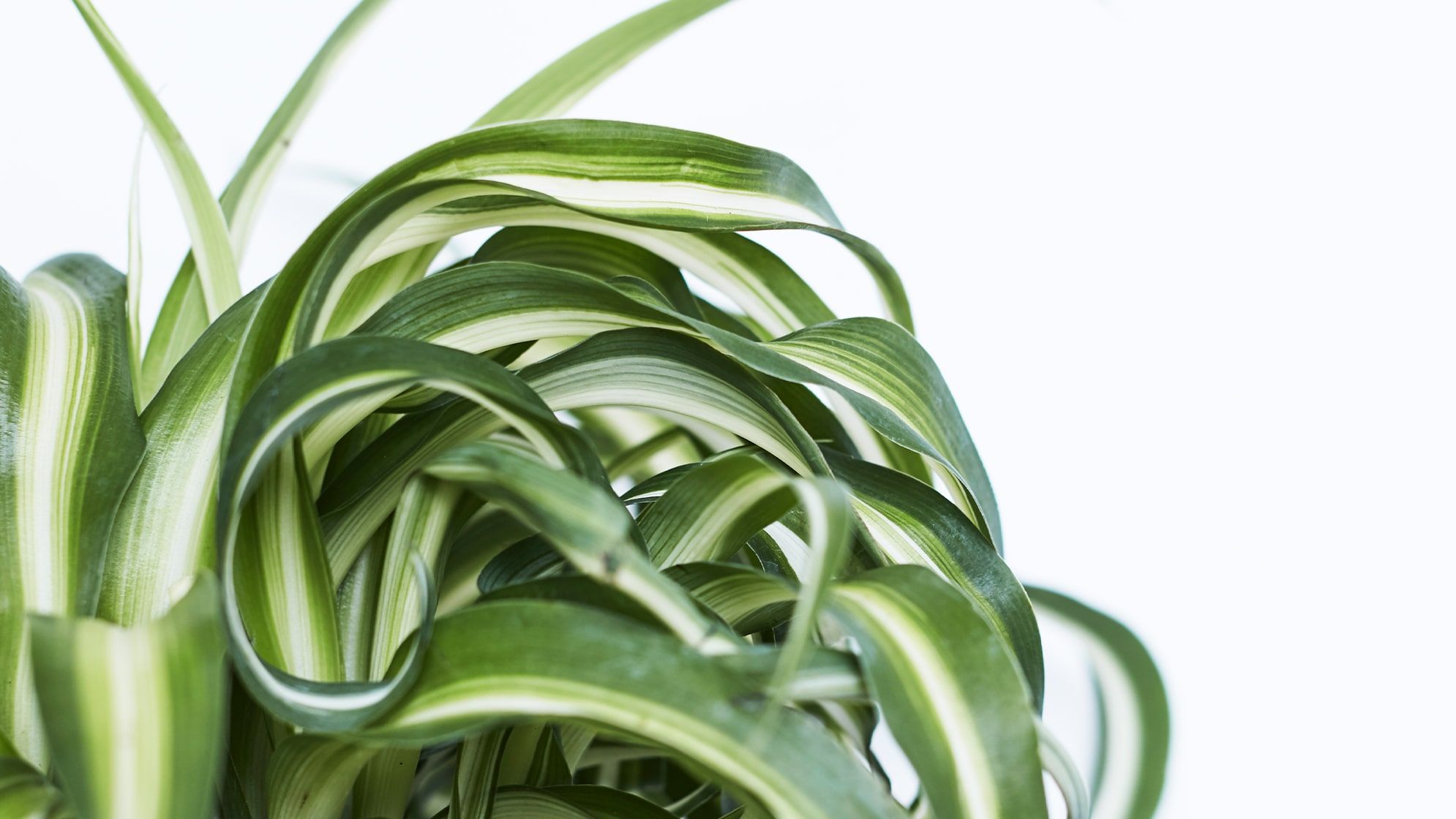
Complete guide to spider plant care
Spider plants are the perfect housemate. Fuss-free, forgiving and easy to live with.
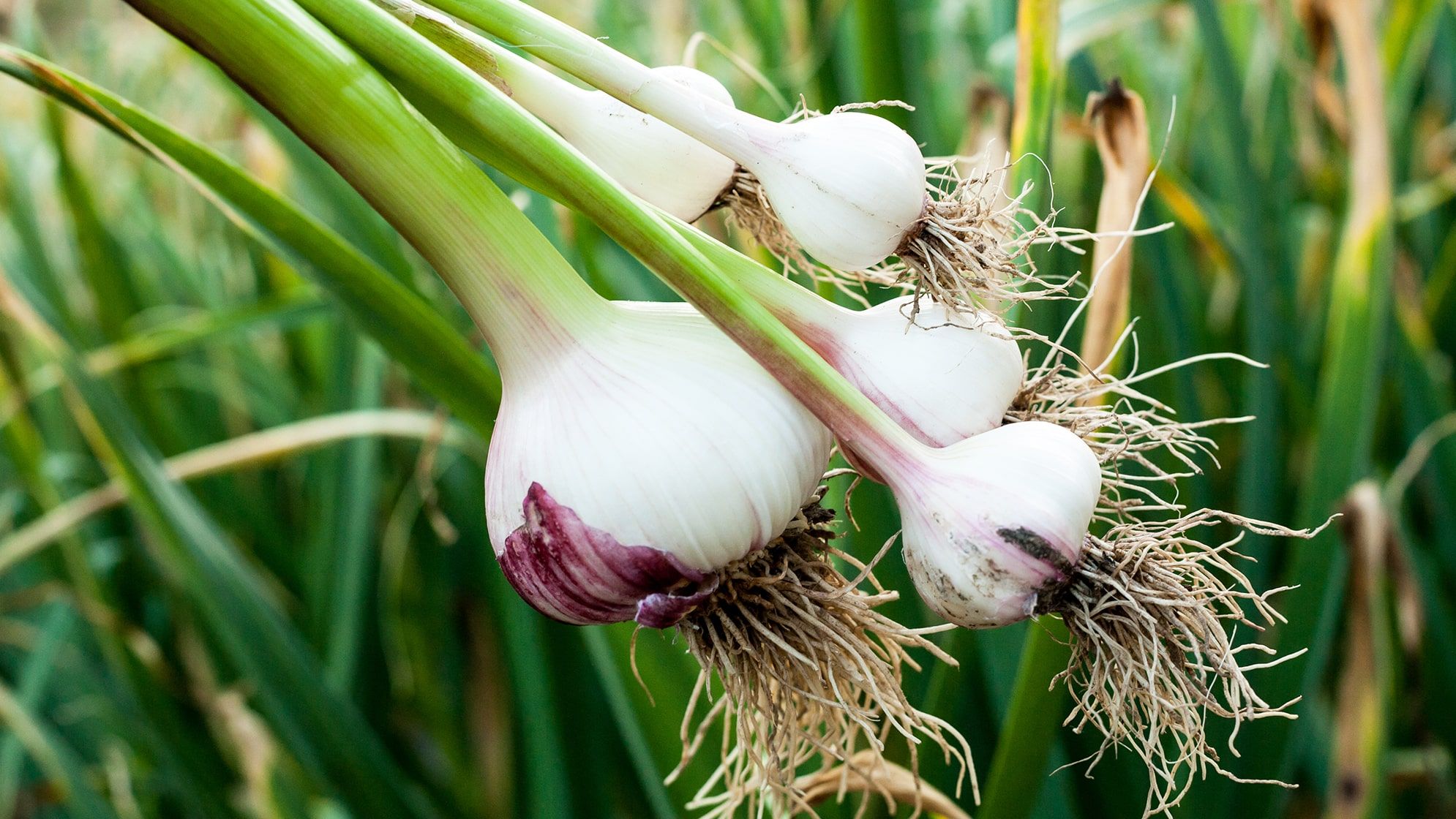
How to grow garlic
Keep vampires away with homegrown garlic.







